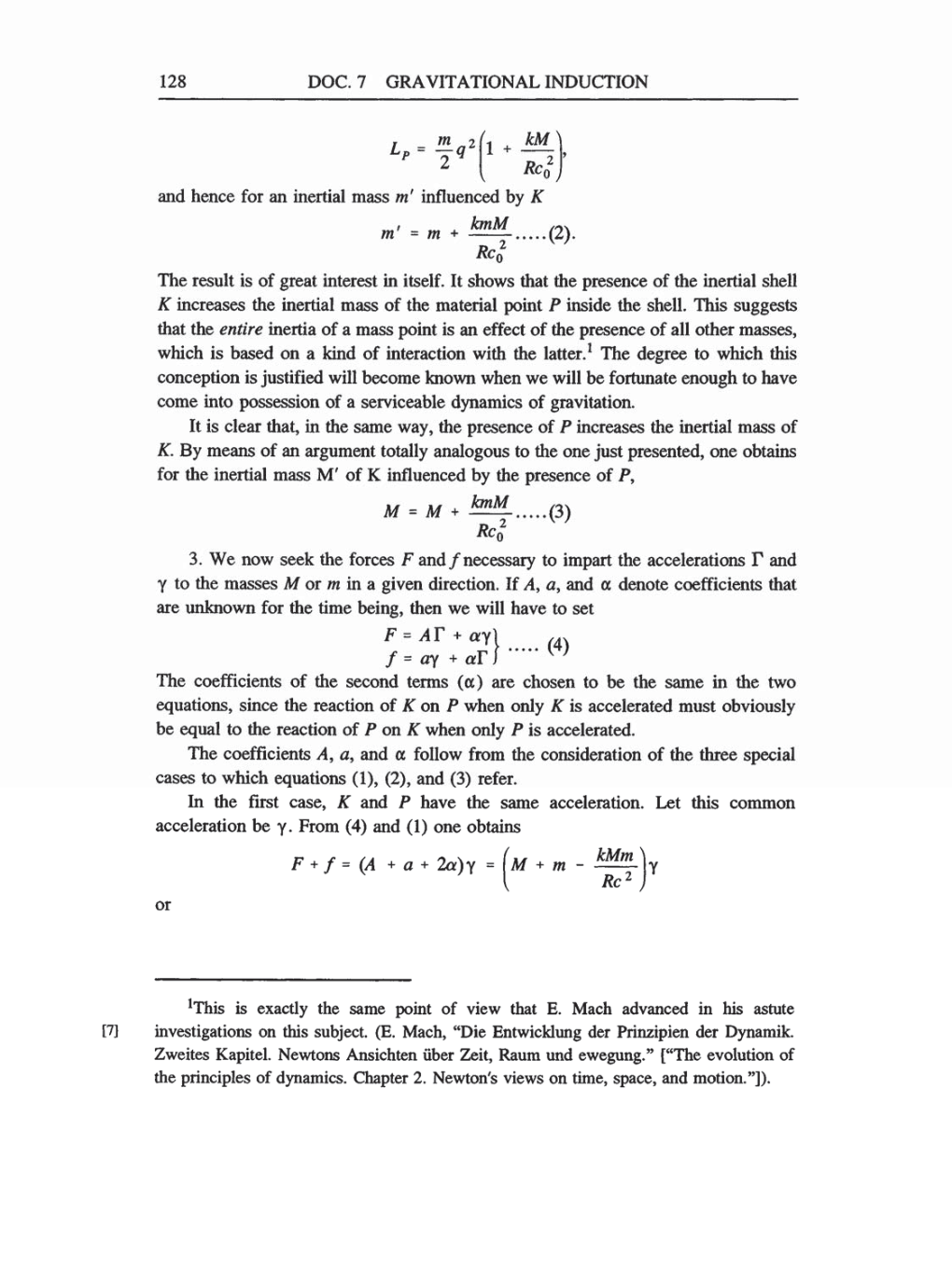128 DOC. 7 GRAVITATIONAL INDUCTION
L
=
-a2
Lp 2q
(
1 +
kM\
Rc,o
and hence for
an
inertial
mass
m' influenced
by
K
m'
=
m +
.....(2).
Rco
The result is of
great
interest in itself. It shows that the
presence
of
the inertial shell
K
increases the inertial
mass
of
the material
point
P
inside the shell. This
suggests
that the entire
inertia
of
a mass
point
is
an
effect
of
the
presence
of
all
other
masses,
which is based
on
a
kind
of
interaction with the
latter.1
The
degree
to which
this
conception
is
justified
will become known when
we
will be fortunate
enough
to
have
come
into
possession
of
a
serviceable
dynamics
of
gravitation.
It is clear
that,
in the
same
way,
the
presence
of P
increases the inertial
mass
of
K.
By means
of
an
argument totally analogous
to the
one
just
presented,
one
obtains
for the inertial
mass
M' of
K influenced
by
the
presence
of
P,
M
=
M
+
kmM
Rco
.....(3)
3.
We
now
seek the forces
F
and ƒ
necessary
to
impart
the
accelerations
T and
Y
to
the
masses
M
or m
in
a
given
direction.
If
A,
a,
and
a
denote coefficients that
are
unknown for
the time
being,
then
we
will have
to set
F
=
AT
+
ayl
ƒ
=
ay
+
alf
1
(4)
The coefficients
of
the second
terms
(a)
are
chosen to be the
same
in the
two
equations,
since the reaction
of
K
on
P
when
only
K is accelerated
must
obviously
be
equal
to
the reaction
of
P
on
K
when
only
P
is accelerated.
The coefficients
A,
a,
and
a
follow from the consideration
of
the three
special
cases
to
which
equations (1), (2),
and
(3)
refer.
In the
first
case,
K and
P
have the
same
acceleration. Let this
common
acceleration be
y.
From
(4)
and
(1)
one
obtains
or
F
+
f
= (A
+ a +
2a)y
+ m
kMm
\
He2)
Y
1This
is
exactly
the
same point
of
view that E. Mach advanced in his astute
investigations
on
this
subject.
(E. Mach,
“Die
Entwicklung
der
Prinzipien
der
Dynamik.
Zweites
Kapitel.
Newtons Ansichten über
Zeit,
Raum und
ewegung.”
[“The
evolution
of
the
principles
of
dynamics. Chapter
2.
Newton's views
on
time,
space,
and
motion.”]).
[7]
